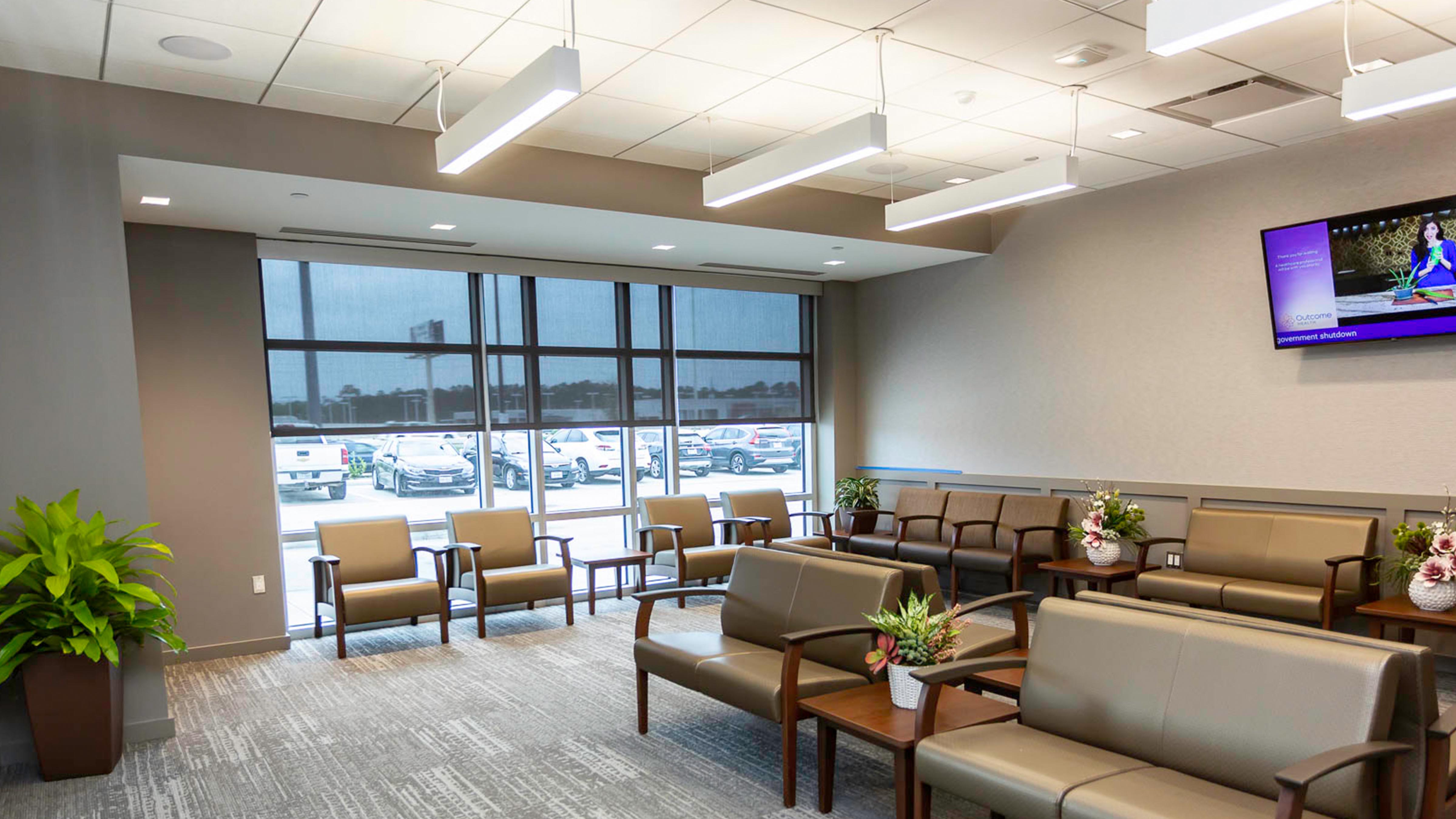They say seeing is believing. But what happens when you don’t want to be seen?
In today’s evolving world of hybrid classrooms, meeting rooms, and even houses of worship, having the right technology is important, especially when needing to be heard. However, the right speaker can be invasive, with wires and bulky devices taking away from the aesthetics of the venue. In-ceiling speakers sound like an easy choice—but they aren’t a one-size-fits-all solution.

“The choice of in-ceiling speakers boils down to weighing coverage versus imaging and soundstage,” said Randy Blanchard, director of audio for Vanco. “They’re not appropriate for environments with extremely high ceilings—an eight-story hotel lobby, for instance. There are also times where you’re going for a strong directional, like live sound reinforcement, where you really want a point-source system.”
So, when are in-ceiling speakers right for your project?
Uniform Audio Coverage
One of the advantages of in-ceiling speakers is they are architecturally pleasing. There is nothing jutting out from the walls or taking up valuable real estate on the floor. Being able to blend in with the with the interior design and not disrupt sightlines is a big deal.
[SCN Hybrid World: 11 Speakerphones for Today's Workspace]
“In commercial applications, including program audio for hospitality and retail, public address, and emergency notification systems, in-ceiling speakers offer superior coverage uniformity—a well-designed system will deliver the same sound pressure and frequency response at every listener position, so no one misses any important messages,” said Blanchard.

“It’s often difficult to project sound from a stage or wall-mounted speakers to the far side of a room," added Rick Kamlet, senior global product manager for installation loudspeakers, JBL Professional. "The result can be sound that’s too loud for the close listeners while being too soft for the farther-away listeners. Ceiling speakers can provide consistent sound levels for all listeners.”
“An in-ceiling speaker is another tool in the box for the sound designer, and careful consideration and design principles should still be applied to maximize intelligibility and coverage,” explained Graham Hendry, vice president of loudspeaker strategy at AtlasIED. “A good example of choosing in-ceiling speakers over surface-mount solutions would be in wide rooms with low ceilings. A distributed in-ceiling system will maintain the relative distance from the listener to the speaker and provide even distribution of SPL [sound pressure level] in a space.”
Installation Considerations
As with any audio upgrade, in-ceiling speaker installations offer some challenges. Kamlet said selecting the right speakers and an effective layout are affected by many factors. His list of installation considerations includes how reverberant the room is, as well as the height of the ceiling and the ceiling structure. Will paging be done through the system, and will there be "zoning" requirements? If so, the system will need to be designed for intelligibility. And, of course, what's the budget?

“Typically, integrators face challenges with the amount of space above a ceiling and coordinating speaker locations with other trades,” added Joe da Silva, vice president of marketing at Extron. “To make the design process easier, Extron offers several online calculators for speaker placement, power requirements, and more. Rooms with restricted space above the ceiling often benefit from low-profile speaker options."
“It’s also important to remember that soundwaves are physical vibrations that affect their environment,” Blanchard said. “Speaker operation can knock loose dust and debris, which can then fall into an unprotected driver and cause buzz or other distortions. Vibration from the speaker can also cause cracks in the drywall near the mounting. A well-tuned enclosure is the best solution for most of these issues, that will both protect the speaker elements and direct more sound energy through the front of the speaker, limiting negative effects from vibration or bleedthrough.”
While there are many choices, it sure seems like round speakers are the way to go. “Round speakers are so popular for one reason, and it’s less to do with the aesthetics and everything to do with installation,” said Hendry. “Simply put, it’s easier and takes less time to cut a round hole than a square one in a ceiling. Of course, square grills can be optional."
Installation can be time efficient, which is highly valuable in turnaround times, especially when it comes to form factor. "Lay-in ceiling tile speakers eliminate the need for the installer to cut ceiling tiles, which can be time-intensive and can cause a mess,” said Kamlet. “In addition, because the ceiling tile form factor is wide, the speaker can be made fairly shallow, allowing it to fit in locations where deeper loudspeakers may not fit, or where there may be obstructions in the ceiling."
Sound Check
With these types of speakers not being mounted, do they still provide solid sound? Hendry said the stigma of an in-ceiling loudspeaker being an inferior solution should be long gone.
“An in-ceiling speaker can be full bandwidth, high sensitivity, with excellent constant directivity characteristics," Hendry added. "In-ceiling speakers may be used in installations along with conventional surface mount loudspeakers installed in various other parts of the same project, so it’s important to have consistency throughout. Most of the audience under an in-ceiling loudspeaker will not be on axis with the loudspeaker, so off-axis performance should be a massive consideration—and one that is often overlooked.”
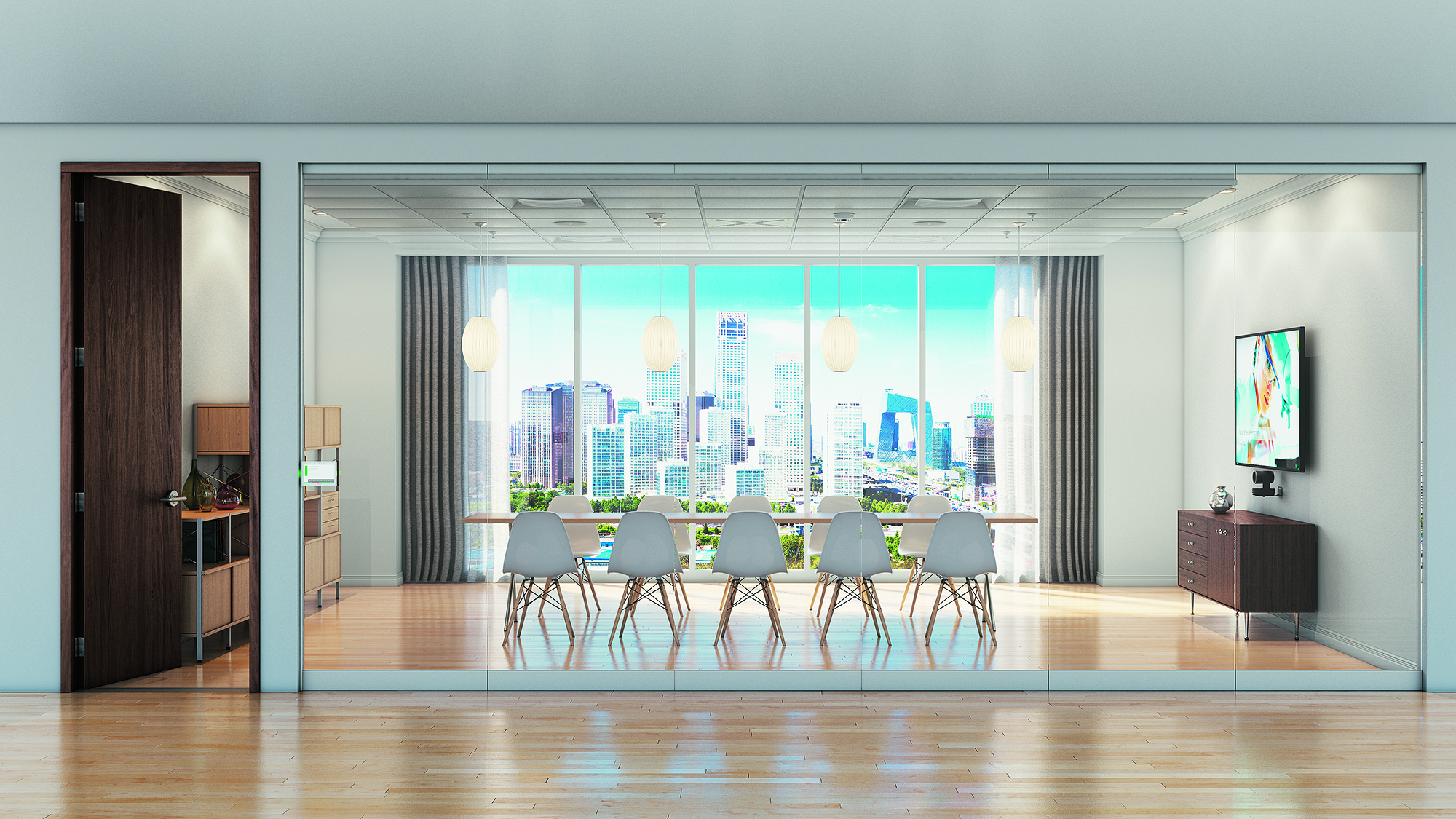
“A distributed in-ceiling speaker system provides even coverage across an entire area,” explained da Silva. "It’s very easy to leverage 70V/100V amplifiers to power dozens of speakers per channel, ensuring listeners are able to hear the audio wherever they might be within the facility. Wall-mounted options can sometimes be too loud near the speakers and not loud enough away from the speakers. In-ceiling speakers are also visually discreet, practically disappearing into a room.”
“They can sound incredible, but it takes a bit of extra engineering,” noted Blanchard. “In-ceiling speaker performance is highly variable—far more so than cabinet speakers.”

In-ceiling speakers can be paired with other solutions, such as subwoofers, for example. "But you cannot defeat the laws of physics," Hendry cautioned. "A subwoofer, in essence, needs a specific amount of volume to create a specific amount of low frequency bandwidth. Generally, a ceiling subwoofer will be physically larger, and the challenge is disguising that amount of real estate in the ceiling."
"Subwoofers require a lot of airflow, they tend to create resonances in the wall or ceiling cavities that can be transmitted into adjacent spaces and negatively affect the performance of the speaker,” added Blanchard. “They also tend to lose a lot of sound energy out of the back because low frequencies require so much more energy to direct. They really need a backbox to be remotely consistent, but most backboxes also consistently limit their performance by restricting airflow.”
Pendant Speaker Possibilities
How valuable are pendant speakers in installations? While they are not quite in-ceiling speakers, they serve an important purpose in several use cases, like installations with high ceilings and open ceilings. It brings the speaker much closer to the listener, providing somewhat better coverage in that situation.
“Many spaces are built with open high ceilings for aesthetics, but still need even coverage. For these situations, pendant speakers offer an ideal solution,” da Silva explained. “Pendant speakers are also a great compliment to traditional in-ceiling speakers. Many spaces combine open ceilings with drop-tile ceilings, so Extron’s family of pendant speakers are voiced consistently with matching in-ceiling speakers to make for a smooth auditory transition as people move from one space to another within the facility.”
Understanding the many features and logistics of today's in-ceiling speaker is half the battle. Finding the right one is the other half. Here is a selection of in-ceiling speakers from an assortment of manufacturers to consider.
AtlasIED SHS-3T2-HD
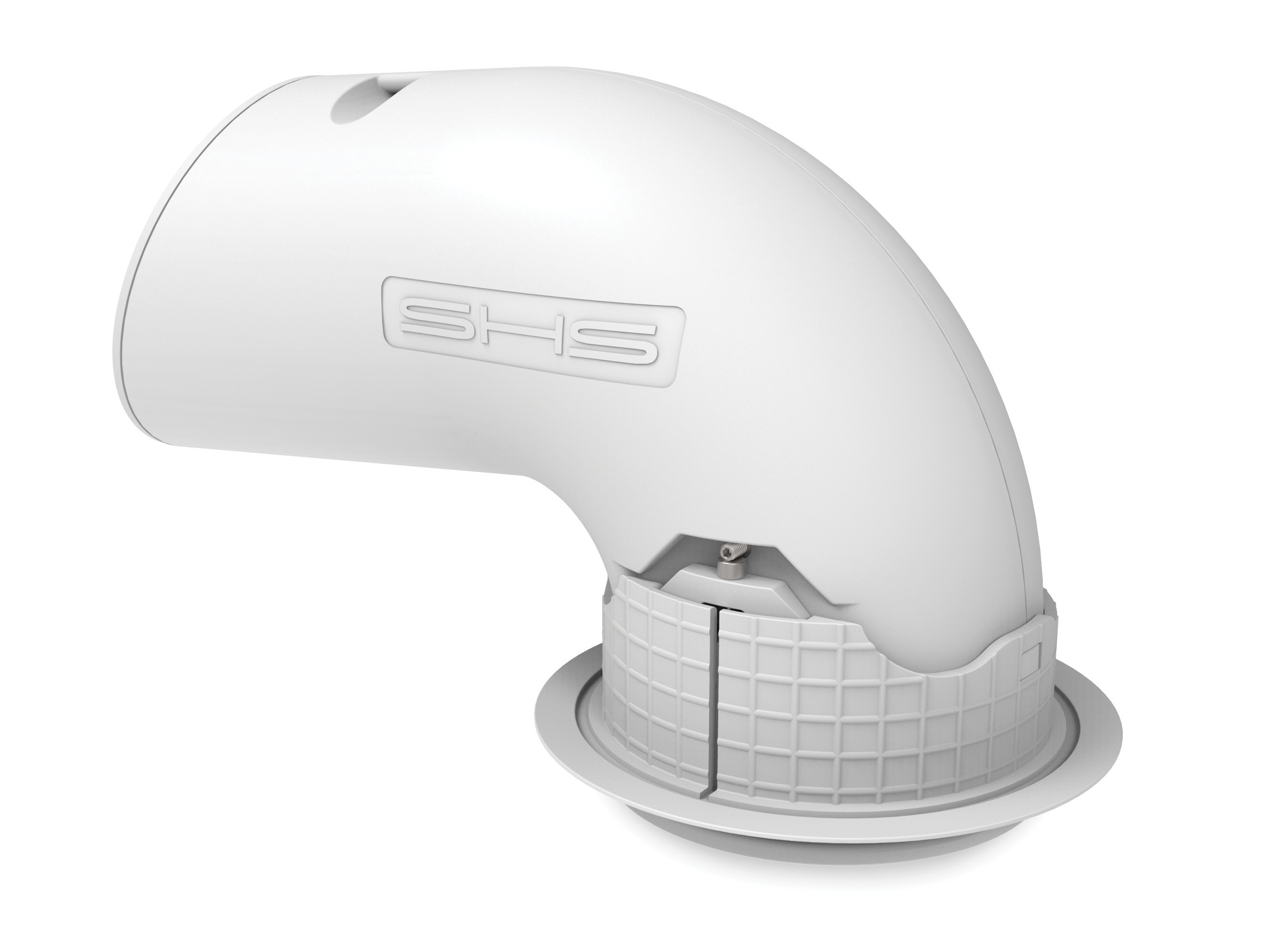
Featuring a curved profile, AtlasIED designed the SHS-3T2-HD specifically for use in shallow, hard deck ceilings that can’t accommodate a larger plenum footprint of the SHS-6T2 or SHS-3T2. This simple-to-install, discreet, low-profile audio solution is even more powerful thanks to AtlasIED’s Adaptive Dispersion Lens Technology, which consists of a 3-inch diameter lens and a micro trim ring. The SHS-3T2-HD expands the high-quality sound capabilities of the company’s Strategically Hidden (SHS) line into a wider range of commercial environments.
Bose Professional FreeSpace FS2P (Pendant)
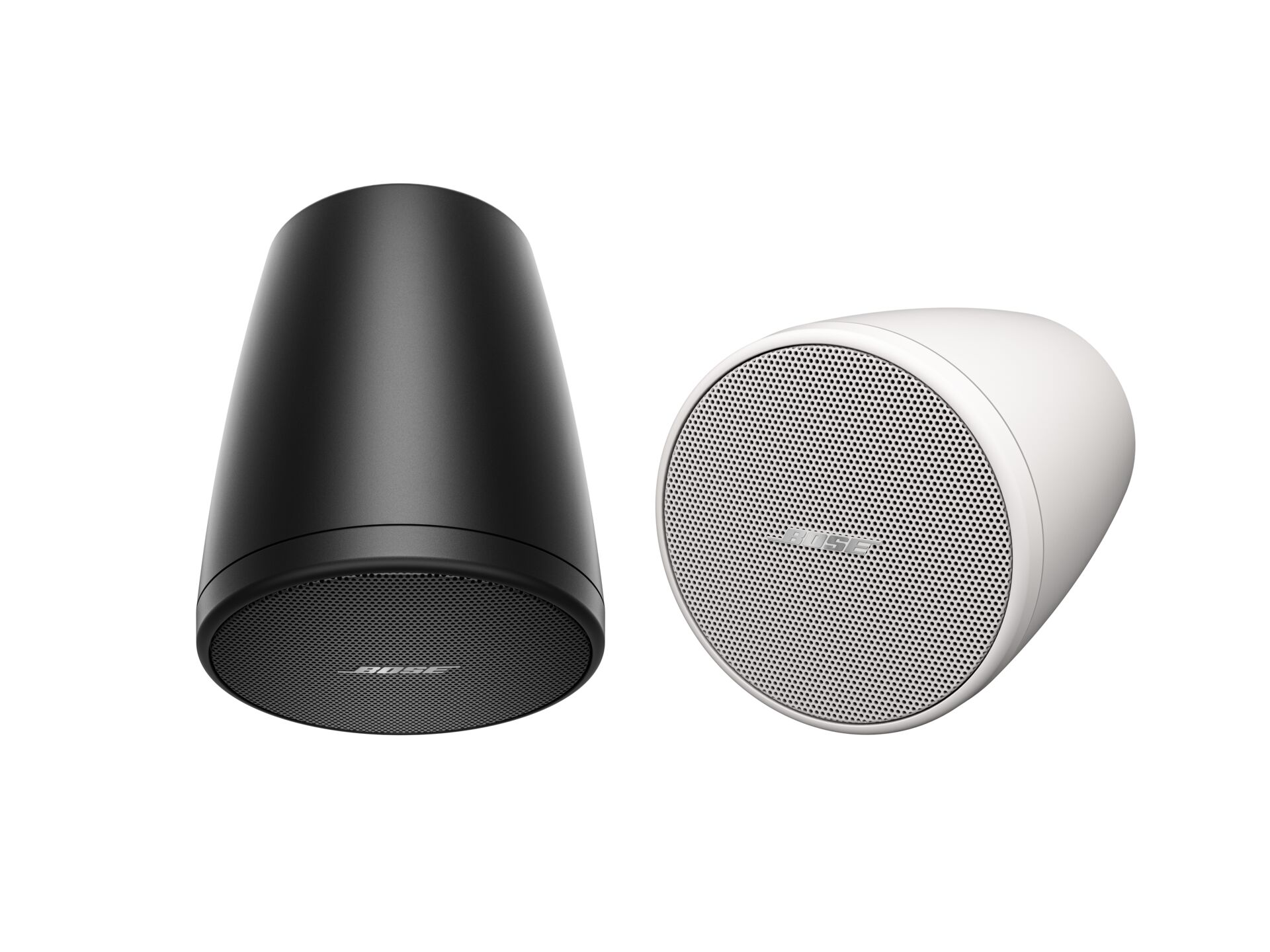
FreeSpace FS loudspeakers are engineered for high-quality performance in both background music and voice announcement applications, making them ideal for almost any commercial space. The line includes five loudspeakers, two distinct levels of sound, new mounting options, and a modern aesthetic to match. For those seeking consistent, quality installed sound, the FS2P is a dedicated pendant model with a full-range 2.25-inch transducer, low frequency range down to 83 Hz, and sensitivity of 87 dB SPL / 1W @ 1m.
Electro-Voice EVID-C4.2LP
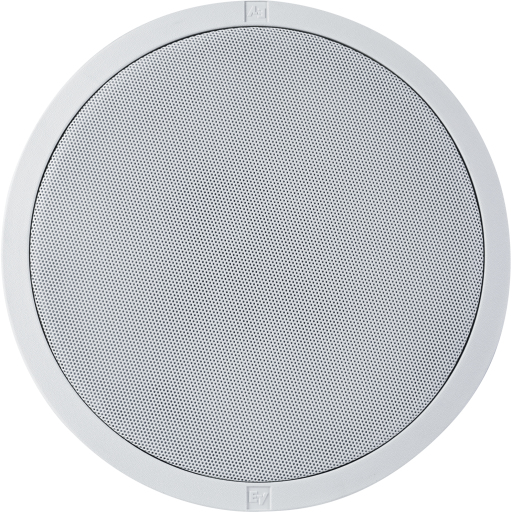
The Electro-Voice EVID-C4.2LP is a low-profile (3.7-inch deep), 4-inch coaxial two-way ceiling loudspeaker system featuring a waveguide-coupled titanium-coated dome tweeter. Both UL1480A and CSA 22.2 205 certified, it utilizes a second-order crossover network at 2.5 kHz, with a comprehensive protection circuit to protect the network, woofer, and tweeter drivers from excessive power levels. The low-profile enclosure makes it easy to mount in very tight spaces.
Extron SF 26CT / SF 26CT LP
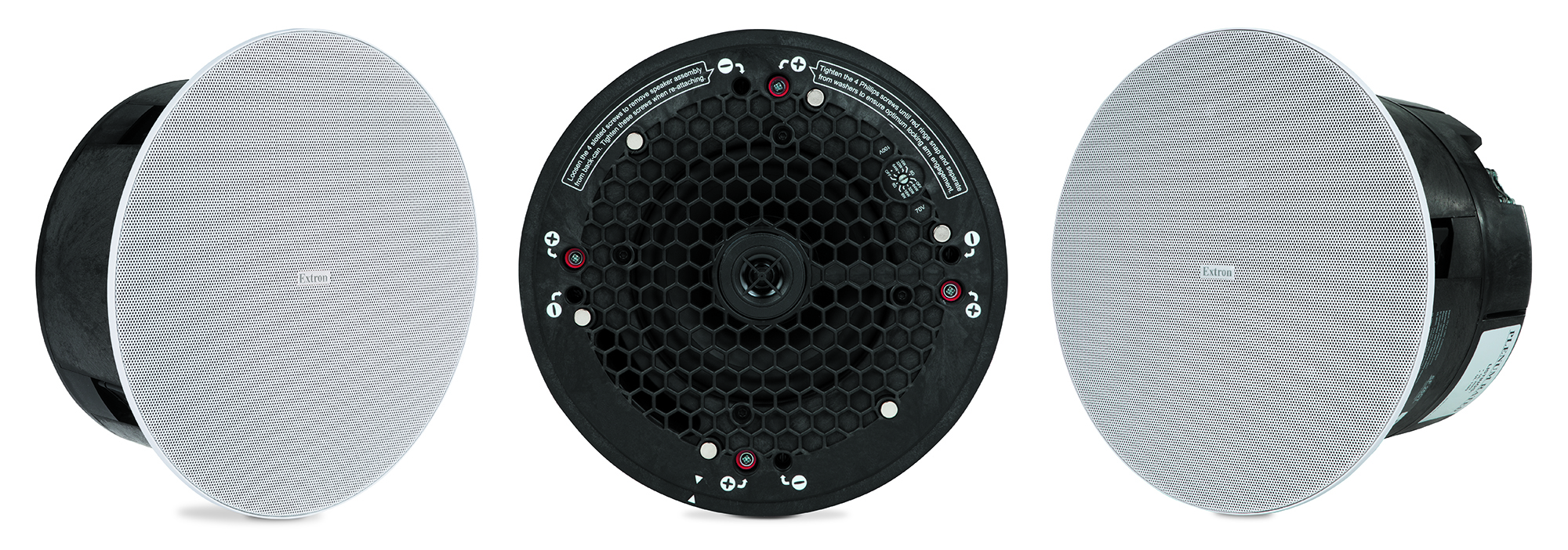
The SoundField XD SF 26CT models are 6.5-inch two-way ceiling speakers featuring an 8-inch or 4.2-inch deep composite back can for use in standard or restricted height ceiling environments. The driver complement includes a 6.5-inch woofer coupled to a 3/4-inch ferrofluid‑cooled dome tweeter. The SF 26CT series meets stringent UL requirements for smoke and heat release in plenum air spaces. A magnetically attached grille with a thin-edged bezel gives the SF 26CT series a refined appearance on the ceiling while offering direct 8 ohm and 70/100V operation.
Hall Technologies SPK-IC6
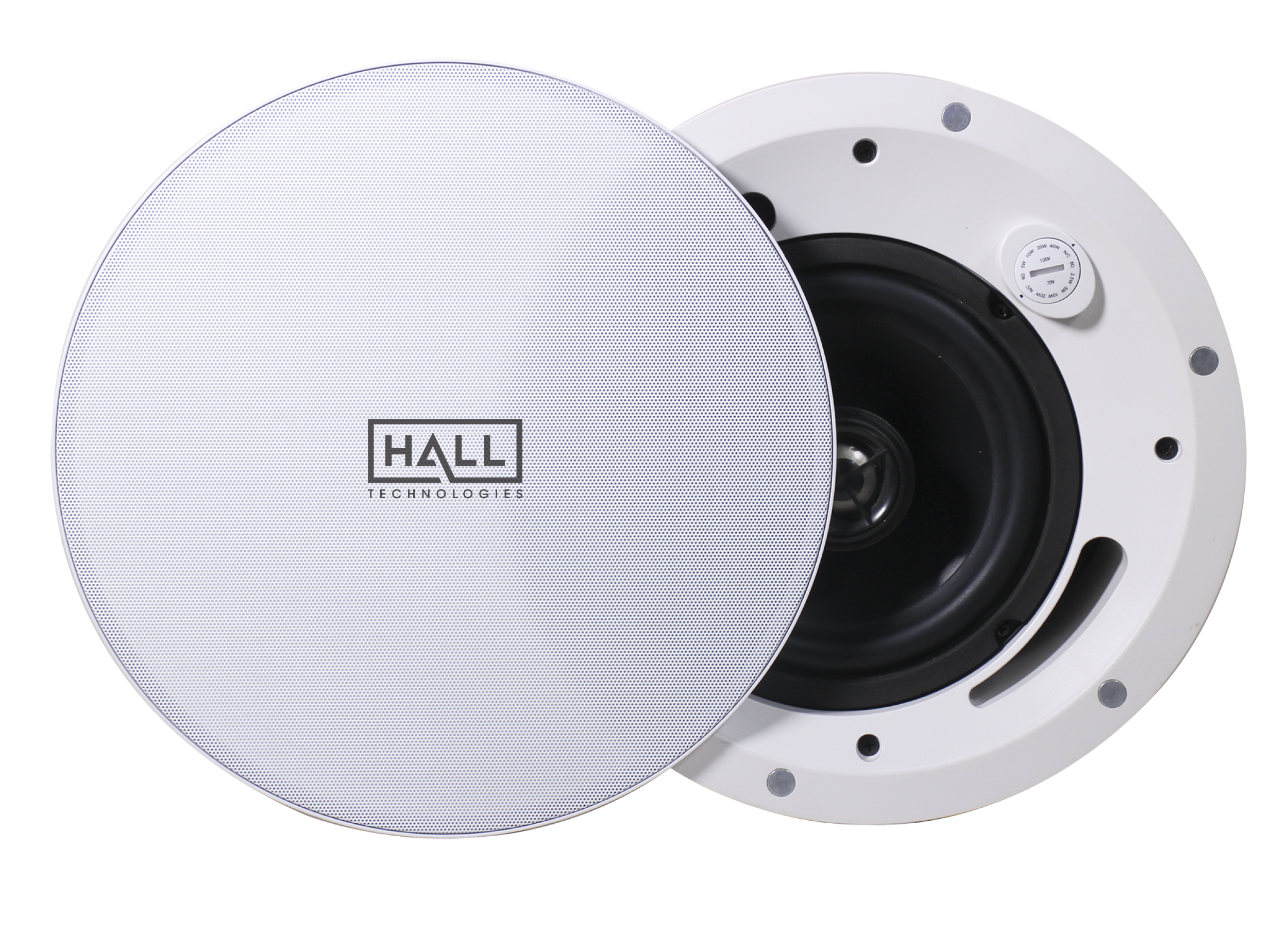
SPK–IC6 is a fire-rated, 40W in–ceiling speaker with a 1-inch titanium dome tweeter and a 6.5-inch graphite cone driver with rubber surround. The SPK–IC6 includes taps for 8 ohm, 100V, and 70V audio solutions and comes in a plenum fire rated back box. SPK–IC6 is perfect for classrooms and lecture halls, as well as medium to large meeting spaces.
JBL Professional Control 45C/T
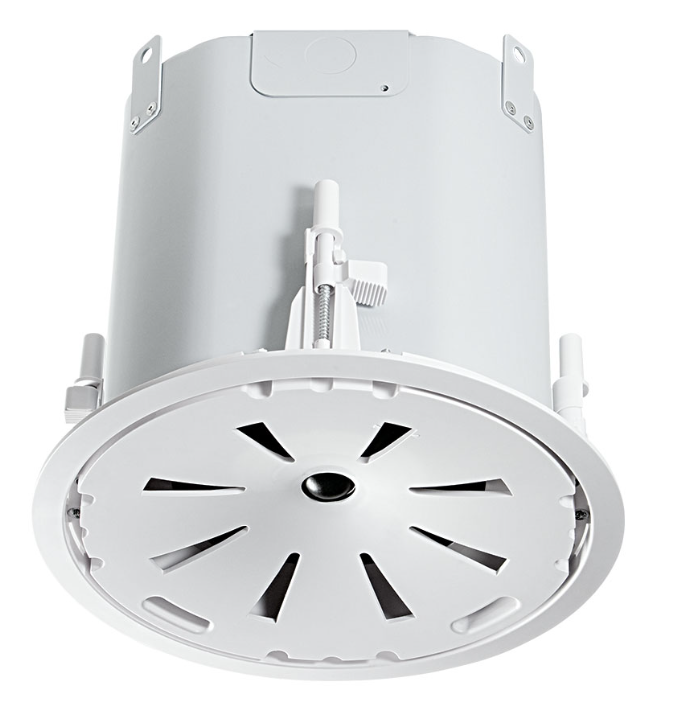
The Control 45C/T is a premium in-ceiling professional loudspeaker designed for applications that can benefit from extremely wide bandwidth and very consistent coverage from a ceiling speaker with a small footprint. It is designed with a consistent 120-degree broadband pattern control featuring JBL’s Radiation Boundary Integrator (RBI) technology.
OWI 25/70/100 Volts In-Ceiling Speaker
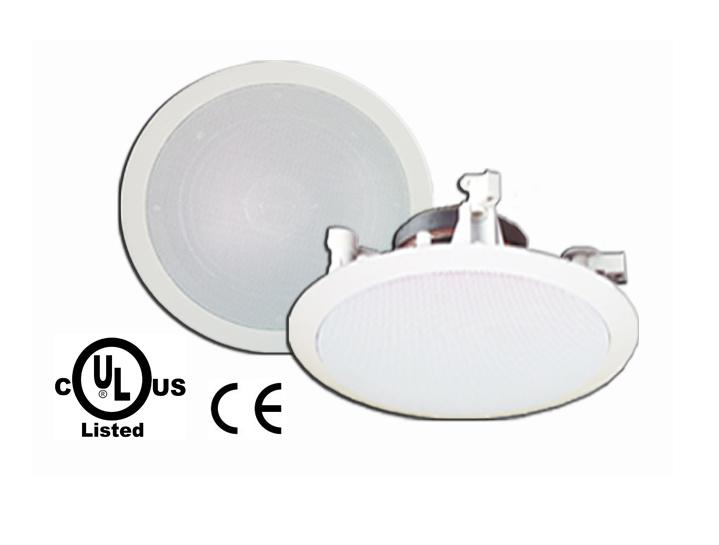
These in-ceiling speakers are both UL listed and CE certified with a 5.25-inch full range. Its white aluminum grill is paintable to match the style of installations, including covered outdoor settings. It provides plenty of power with 0.0625/0.125/0.25/0.5W at 25V, 0.5/1/2/4W at 70V, and 1/2/4/8W at 100V.
QSC Q-SYS NL-C4 Network Loudspeaker
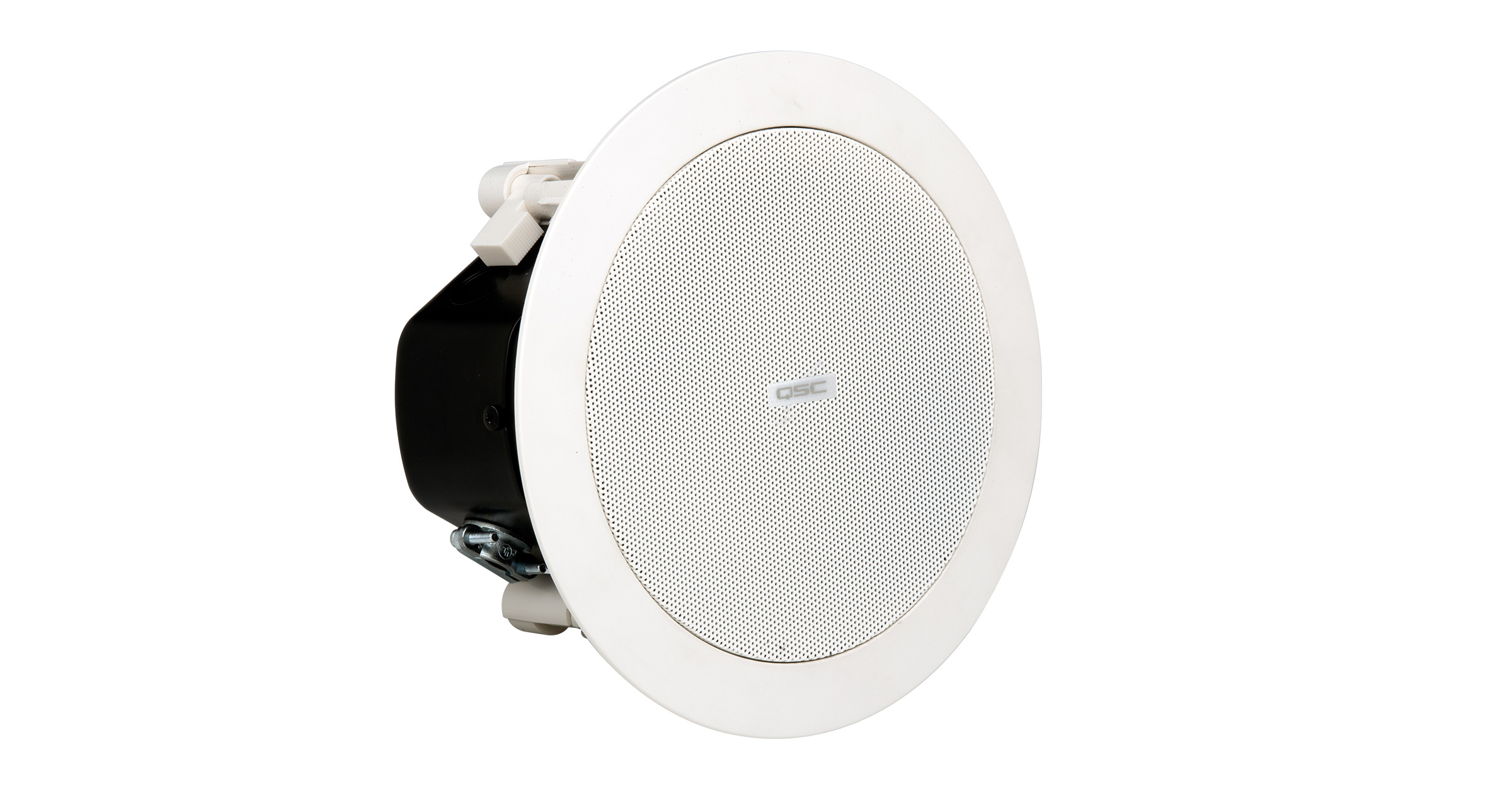
The Q-SYS NL-C4 is a network PoE loudspeaker that delivers clear speech and music reproduction natively to Q-SYS. The ceiling-mount loudspeaker features a 4-inch, full-range driver, and can be integrated into the space with a single Ethernet cable to reduce the overall hardware footprint and lower system cost. As a native Q-SYS product, users can take advantage of the drag-and-drop integration and simple control capabilities offered by Q-SYS.
SoundTube Entertainment CM Series
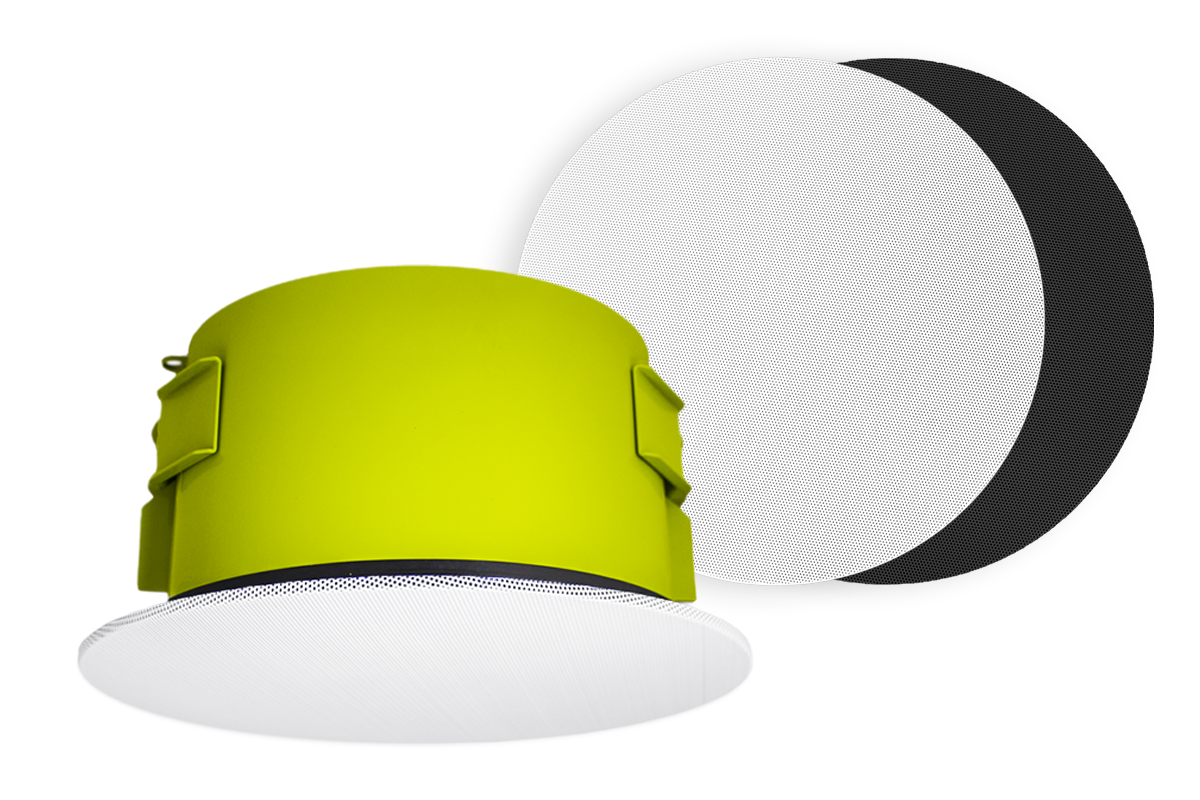
All CM series speakers are designed specifically for low and suspended ceilings. SoundTube’s in-celling speakers dramatically reduce installation time with the SpeedWing constant-tension mounting system, while the four-pin Euroblock connector speeds up wiring, daisy-chaining, and prewiring. The CMi Series incorporates low-profile styling and seamless coverage in a one-piece, integrated unit. Using BroadBeam technology, the CM models greatly expand the coverage area, providing full-frequency dispersion and reducing the number of speakers needed for an installation.
TOA Electronics FB-3862CU
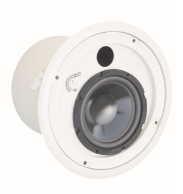
The FB-3862CU is a high-performance, flush-mount ceiling subwoofer assembly for low frequency enhancement of distributed loudspeaker systems. A 60W 70/100V transformer is included, and the bandpass design eliminates the need for a bi-amplified system. The 8-ohm bypass allows for applications using electronic crossovers and dedicated low impedance power amplifiers, offering a full spectrum sonic experience suitable for retail environments, restaurants, lounges, conference rooms, and any application where music or video content require high-quality sound.
Triad Speakers IC53
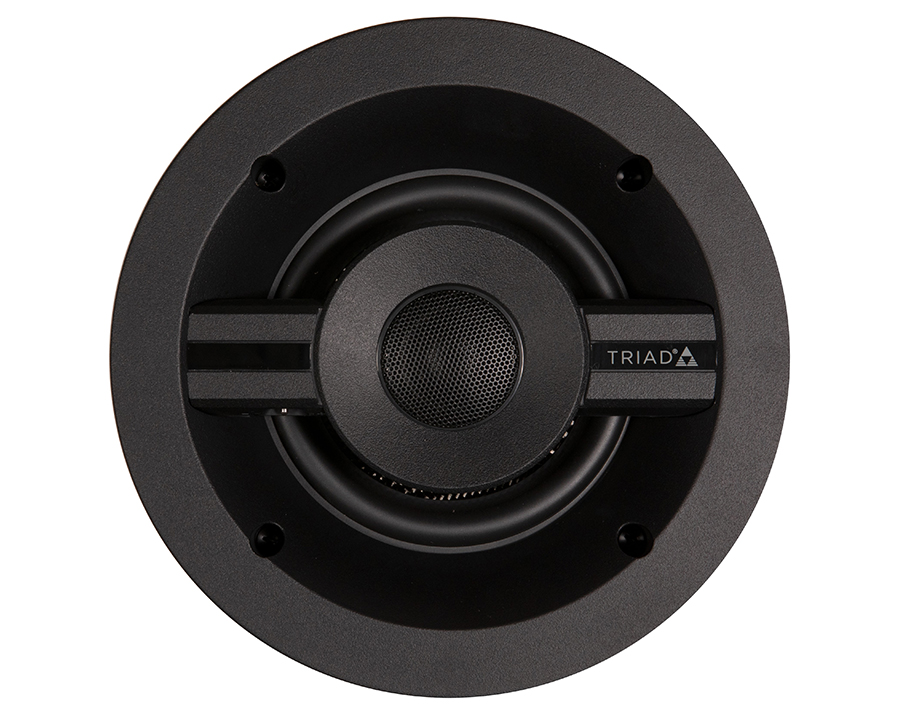
Triad’s IC53 speaker is engineered for music enthusiasts who are looking for exceptional sound in every room. This speaker utilizes a woven carbon-fiber woofer for superior bass response and durability. A 1-inch silk dome tweeter offers smooth, high-frequency sound and is aimable to offer greater installation flexibility.
Vanco TIC801
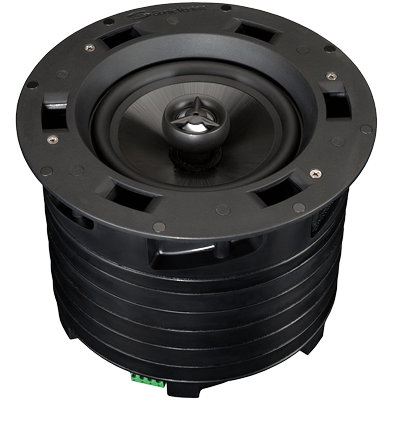
The Beale Street Audio architectural speaker line’s patented Sonic Vortex enclosure directs all sound energy into the listening area, with no bleedthrough to adjacent spaces or harmful resonance. As a result, Beale Street Audio delivers deep, rich, bass with a 6-9 dB boost over traditional architectural loudspeakers with the same enclosure size. The TIC801 8-inch 70/100V in-ceiling loudspeaker brings Sonic Vortex performance to constant voltage applications, with a 35Hz–24KHz frequency response and a 92 dB sensitivity. It features an 8-inch fluted poly woofer and a 1-inch aluminum pivoting tweeter.
